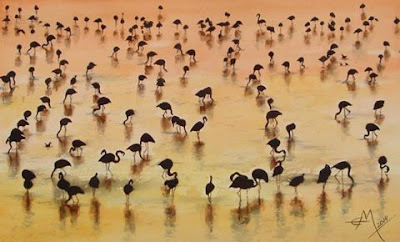If you're having difficulty deciding if you wanted to paint a commission, here are some pros and cons to consider:
Pros:
- There is a great sense of satisfaction in converting a person's vision into a beautiful painting
- Many people charge more for commissions so you can make more money
- Some commissions offer artistic challenges and this improves your portfolio.
- Painting something specific for a client adds additional pressure to the artist
- Sometimes the business relationships doesn't work out. Some clients are too demanding, controlling or hard to please can make the commission experience a bad one.
- When asked to do something different, many artists underestimate the level of effort and are challenged in delivering on time.
- The subject could be out of the artists comfort zone and not end with positive results.
On the issues of costs, some artists ask their clients for up to 50% of the costs. However, some only accept payment when a customer is happy with the final commission.
Here is this week's art find from Mariano Galan:
Have a great week,
Danielle


